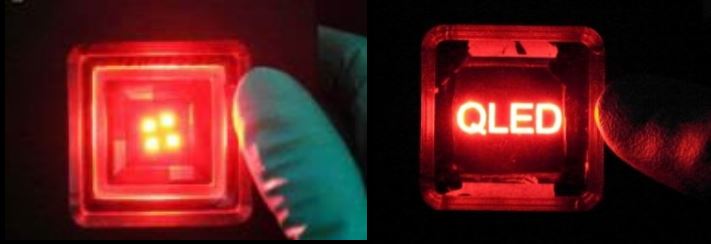Highly efficient and stable eco-friendly QLED: a giant step towards the next-generation display
The TV display market is evolving rapidly with the research development of the display technology. A recent trend in the field is the race heated up between the OLED (organic light-emitting diode) and QLED (quantum dot light-emitting diode) display. Especially, the next move of the QLED display technology is drawing much attention as its relative strength point – high color purity and bright luminescence – makes it a potential candidate which can overcome the current limitations that OLED is facing. On the other hand, some are still doubtful about the future of the QLED since the commercialized QLED TVs are making use of the backlight, which means that the quantum dot units are not self-luminescing. This is a critical task to be solved because the use of the backlight limits not only the slimness of the TV product but also the flexibility of the display screen.
Very recently, a research team of Prof. Dongho Kim in Yonsei University and Dr. Eunjoo Jang in Inorganic Materials Lab of Samsung Electronics provided a breakthrough to this problem by introducing the self-luminescing quantum dot light-emitting diodes which are both bright and stable. The QLED devices developed in this study achieved the theoretical maximum efficiency of 21.4% and lifetime of a million hours (at 100 cd/m2). This performance is an all-time high for the nontoxic quantum dot materials and is comparable to that of the state-of-art toxic Cd-containing QLEDs. These results were published in “Nature”, the most renowned academic journal among all.
 Photographs of four-pixel QD-LED and text-patterned QD-LED
Photographs of four-pixel QD-LED and text-patterned QD-LED
(image: provided by Prof. Kim's lab)
Quantum dots are nanometer-sized semiconductor particles, of which the emission light color can be tuned by the size of the particle. In this research, quantum dots were designed in core/shell/shell structure in order to improve the brightness and robustness. Indium phosphide (InP), an environmentally benign material, is used for the light-emitting core part of the particle. Highly symmetric and uniform shell encapsulation reduced the structural defects and the thick layer of the ZnSe and ZnS shell minimized the energy loss between each quantum dot particles, leading to an improved LED device efficiency. The QLED efficiency was further optimized by shortening the ligand chain length at the shell surface, thus facilitating the charge transport to the transport layer.
The energy loss mechanism and their relationship to the quantum dot structure were elucidated by spectroscopic technique. Time-resolved spectroscopy is a powerful tool to study quantum dots since it allows the monitoring of the specific photophysical processes occurring in quantum dots under light illumination. It turned out that the light energy loss through a process called Auger recombination was responsible for the luminescence efficiency of the quantum dot under intense illumination and that the extent of energy loss was dependent on the ZnSe shell thickness.
The research team demonstrates the feasibility of the commercialization of self-luminescing QLED by overcoming the current limitations of quantum dot materials. Furthermore, the disclosure of the photophysical mechanism governing the QLED performance is presenting a milestone for the future development of the QLED display. “Quantum dots, with their extraordinary color purity regardless of the brightness, will provide the display that’s highly close to the natural beauty itself. The self-luminescing QLED TV will enable people to experience the real world at home.” concludes Prof. Kim. The findings of this research herald a new era of eco-friendly display technology, of which will likely be seen at the home appliances stall of department stores in the near future.
Updated in Dec 2019
Recommended Articles
Professor Byeong-Su Kim
New study demonstrates that “deformable” electronics are not a stretch
Professor Jinwook Kim
Smectite-to-illite transformation: Microbes could hold key to oil exploration
Professor Yeonjin Yi